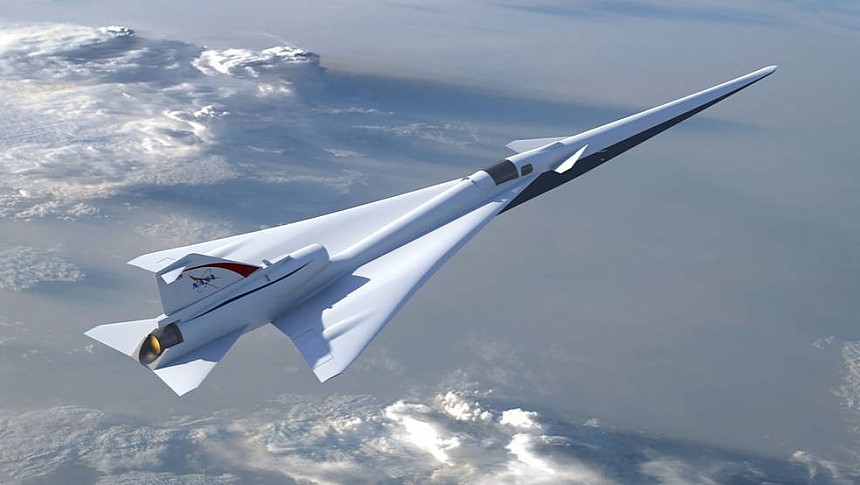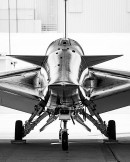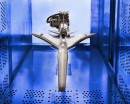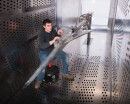2023 was supposed to mark the first test flight of an experimental type of aircraft that might just bring back supersonic passenger air travel. As it turns out, making such a machine from scratch is not easy business, and the airplane will not take to the sky this year after all.
I'm talking about a plane we've discussed extensively these past few years, the X-59 Quiet SuperSonic Technology (QueSST). It's a piece of hardware on which both NASA and Lockheed Martin's Skunk Works have worked feverishly these past few years, but they still seem to have a long way to go.
The QueSST is a mutant aircraft, made both from new parts, but also some that have been cannibalized from existing military planes. For instance, the cockpit where the pilot will be seated, including the ejection seat and the canopy, is the same one you'll find on the T-38 Talon trainer aircraft. The landing gear is generally used on the F-16, while the life support system is an adaptation of the one deployed on the F-15.
Add to all that a new frame, a General Electric turbofan engine rated at 22,000 pounds of thrust, and an overall design not attempted before, and you end up with a very complex piece of machinery on your hands.
So complex, in fact, that it poses several technical challenges that need to be addressed before the many parts are fully integrated into the X-59. And we're also informed about intermittent issues with some of the safety-redundant computers that control the aircraft's systems.
All of the above made the space agency less confident that a safe flight can be performed, so it announced this week it will no longer fly the X-59 for the first time by the end of the year, but it will instead do so at an undisclosed point in 2024.
At the time of writing the experimental plane is going through the mandatory pre-flight integrated testing. Once that is complete, a flight readiness review will have to be conducted, and only after that will we get a more specific timeline regarding flights.
If successful, the X-59 may very well bring back passenger supersonic flight, and all that it's possible thanks to a new type of design.
You see, normal supersonic aircraft create a series of pressure waves in front and behind as they passe through the air. The waves at the front are supersonic, meaning they get squashed together and have no means of escaping.
They eventually merge, creating a rise in pressure at the nose of the plane, followed shortly after by a return to normal pressure when the airplane passes through the wave. This is when the sonic boom occurs.
Given how these booms can be as loud as 78 dB at over 8,000 meters altitude (26,200 feet, value for an F-16), authorities have long ago banned supersonic flight over land, and pushed the civilian aviation into releasing just a single supersonic airliner in its entire existence, the Concorde.
The X-59 on the other hand uses a design meant to separate the shocks and expansions associated with supersonic flight, which would bring the volume of a supersonic boom down to 60 dB. That's about as loud as an average conversation.
It's hoped that the X-59 would eventually open the doors for the production of new supersonic airliners, even some that could fly at high speeds over populated areas.
The QueSST is a mutant aircraft, made both from new parts, but also some that have been cannibalized from existing military planes. For instance, the cockpit where the pilot will be seated, including the ejection seat and the canopy, is the same one you'll find on the T-38 Talon trainer aircraft. The landing gear is generally used on the F-16, while the life support system is an adaptation of the one deployed on the F-15.
Add to all that a new frame, a General Electric turbofan engine rated at 22,000 pounds of thrust, and an overall design not attempted before, and you end up with a very complex piece of machinery on your hands.
So complex, in fact, that it poses several technical challenges that need to be addressed before the many parts are fully integrated into the X-59. And we're also informed about intermittent issues with some of the safety-redundant computers that control the aircraft's systems.
All of the above made the space agency less confident that a safe flight can be performed, so it announced this week it will no longer fly the X-59 for the first time by the end of the year, but it will instead do so at an undisclosed point in 2024.
At the time of writing the experimental plane is going through the mandatory pre-flight integrated testing. Once that is complete, a flight readiness review will have to be conducted, and only after that will we get a more specific timeline regarding flights.
If successful, the X-59 may very well bring back passenger supersonic flight, and all that it's possible thanks to a new type of design.
You see, normal supersonic aircraft create a series of pressure waves in front and behind as they passe through the air. The waves at the front are supersonic, meaning they get squashed together and have no means of escaping.
They eventually merge, creating a rise in pressure at the nose of the plane, followed shortly after by a return to normal pressure when the airplane passes through the wave. This is when the sonic boom occurs.
Given how these booms can be as loud as 78 dB at over 8,000 meters altitude (26,200 feet, value for an F-16), authorities have long ago banned supersonic flight over land, and pushed the civilian aviation into releasing just a single supersonic airliner in its entire existence, the Concorde.
The X-59 on the other hand uses a design meant to separate the shocks and expansions associated with supersonic flight, which would bring the volume of a supersonic boom down to 60 dB. That's about as loud as an average conversation.
It's hoped that the X-59 would eventually open the doors for the production of new supersonic airliners, even some that could fly at high speeds over populated areas.










